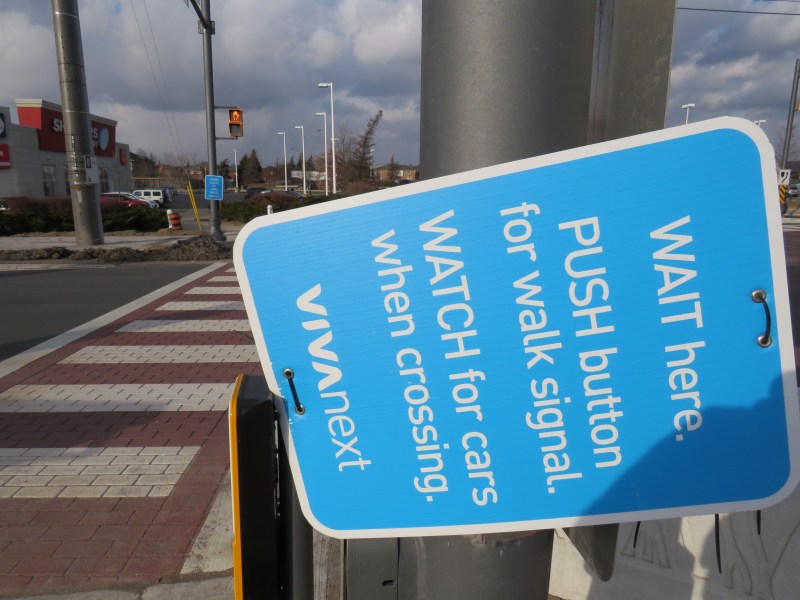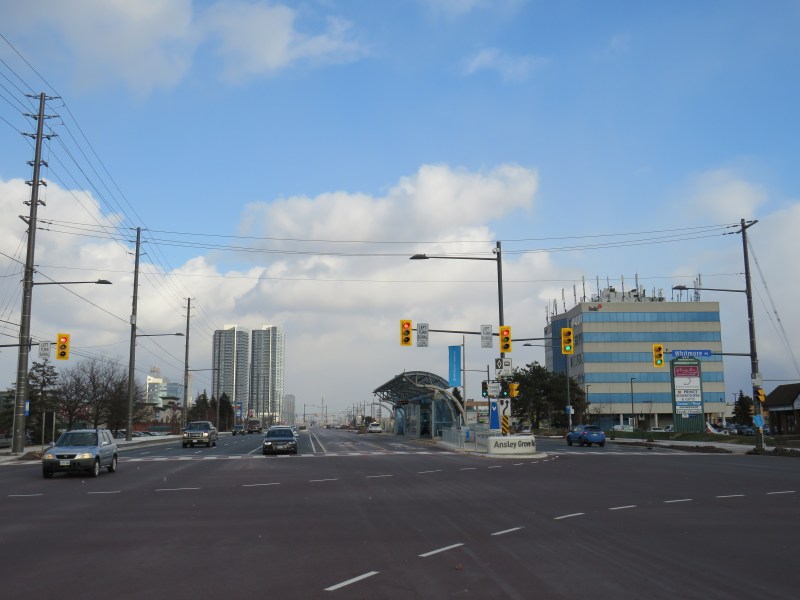 A broken system
A broken system
When York Region Transit was formed in 2001, it promised great things for the large, growing suburban region north of Toronto. It amalgamated four local transit systems, and took over local services provided by GO Transit, and extended service to outlying communities, including Stouffville, King City, and Holland Landing. In 2005, YRT introduced Viva, a series of limited-stop bus routes along major corridors, offering distinct, comfortable buses, off-board fare payment, and signal priority to speed up service.
Since YRT formed, Durham Region amalgamated its municipal transit systems, Brampton introduced Zum, a similar network of limited-stop bus routes, and Mississauga and Toronto rebranded and expanded their express bus routes. For a while, it appeared that York Region was leading the way in growing transit ridership in the suburbs.
Unfortunately, by focusing on building new Rapidways in the median of Yonge Street, Highway 7, and Davis Drive while neglecting service levels, — even cutting back bus service on Viva routes — York Region has fallen behind. I also found that those Rapidways — meant to speed buses through congested arterials — are poorly designed for pedestrians and transit riders.
The first section of York Region’s Rapidways opened on Highway 7 on the boundary between Markham and Richmond Hill in September 2013. Soon after it opened, I paid a visit and wrote about it on the Spacing Toronto website.
On that section of Highway 7, York Region widened Highway 7 to accommodate the two bus-only centre lanes while maintaining six through traffic lanes (three in each direction). It also built new bike lanes along Highway 7, while improving the sidewalks and landscaping along the street. But the wide right-of-way required pedestrians to cross nine lanes of traffic (including the two bus lanes); with a two-stage crossing, this required pedestrians to beg twice to cross a single road.
In September 2013, I wrote that I was hopeful that with expansion and future service improvements “these attractive new Rapidways will prove their worth.” Over six years later, with more Rapidway sections open, they have not lived up to their promise.
In 2016, a Rapidway opened on Davis Drive in Newmarket, though it coincided with service cuts, including several routes that connect with the new Viva Yellow route. In January 2020, additional sections of Rapidways opened on Centre and Bathurst Streets in Vaughan, and on Yonge Street in Newmarket.
 Technically a complete street: cross-section of Highway 7 in Vaughan
Technically a complete street: cross-section of Highway 7 in Vaughan
The newly completed section of Highway 7 in Vaughan contains six traffic lanes, two Rapidway lanes, left-turn lanes, and raised bicycle lanes, separated by a curb from traffic. The additional protection for cyclists is an improvement over the first section in Markham, where the bike lanes had no separation from traffic.
Unfortunately, the requirement to beg twice to cross the street remains: nine lanes of traffic is a long distance to cross, and despite the new median busways, private motor traffic is still prioritized. Protected left turns come first, even when a bus is waiting to enter the far-side Viva station. With high traffic volumes on Yonge Street and Highway 7, pedestrians may have to wait a long time to cross.
At Yonge Street and Davis Drive in Newmarket, it may take at least 3 minutes and 45 seconds to do just that.
I visited Newmarket recently to try out the new sections of York Region’s Rapidways. In the video I took at the intersection of Tuesday January 28, I counted five distinct traffic phases:
- Left turning vehicles from Davis Drive to Yonge Street: note the pedestrians starting the crossing early.
- East-west through traffic: the pedestrian signal appears for about 9 seconds before the “don’t walk” flashing hand and countdown begins, with 22 seconds to complete the crossing. A young, able-bodied adult in a hurry could complete the crossing before the countdown ends, but it does not give enough time for children, older pedestrians or anyone with a disability to complete the crossing. This is followed by 14 seconds of amber and red lights before the next phase.
- Left-turning vehicles from Yonge Street to Davis Drive.
- North-south traffic on Yonge Street. The walk signals to cross Davis Drive activate automatically without pressing a beg button. North-south traffic has about 1 minute, 20 seconds of green light time.
- A separate phase to allow Viva Blue buses to turn between Davis Drive East and Yonge Street before left turns from Davis to Yonge begin again.
At the end, the walk signal does not appear because the beg button wasn’t pressed. To follow the letter of the law, you will have to wait another 3:45 for the cycle to repeat itself. No wonder pedestrians choose to ignore the signals.
The total cost for these Rapidways is $2 billion. Unfortunately, York Region is not getting enough value out of those capital expenditures.
On Highway 7 in Vaughan, the Viva Orange route comes approximately every 30 minutes outside of rush hours, when service improves to every 15 minutes. Though Brampton Transit’s 501 Züm also uses the Rapidway west of the subway terminal, it’s a waste of capacity. Though Metrolinx claims the Rapidways allow buses to travel 15 to 39 per cent faster, when buses only come every 30 minutes, they are not going to be attractive to new riders.
 Outside of rush hours, the Viva Orange bus arrives just twice an hour.
Outside of rush hours, the Viva Orange bus arrives just twice an hour.
The opening of the subway to Vaughan Metropolitan Centre presented a golden opportunity to build bus ridership to feed the new rapid transit line. However, York Region Transit ridership dropped from 23.1 million in 2017 to 22.2 million in 2018, the first full year of the subway extension’s opening. A long-promised Viva Silver route, connecting the subway with Vaughan Mills Mall, a new hospital at Major Mackenzie and Jane Streets, and Richmond Hill, has yet to begin service. Service cuts have become an annual event at YRT, as operating cost containment continues to be the priority.
Meanwhile, Brampton Transit, which serves a smaller population, surpassed York Region’s ridership by 9 million in 2018. It doesn’t have any of York Region’s fancy busways. Instead it focused on service.
I keep coming back to my criticism of York Region’s Rapidways because they demonstrate so well the problems with urban transportation: a desire to cut ribbons and build fancy new transit infrastructure, while neglecting the need to grow ridership and provide the necessary connections. Pedestrians are transit riders; it should be easy for them to get to transit and walk in transit-supported neighbourhoods. Beg buttons and two-stage crossings do exactly the opposite.

2 replies on “Viva Rapidways: hurry up and wait”
I wouldn’t say that two-stage crossings themselves are a bad idea. When set up properly, they can give pedestrians more green time than one-stage crossings by keeping one side of the crossing green during left-turn phases.
You’re right, that if done properly, you can time two-stage crossings that way. Unfortunately, they are not set like that. And pedestrians have to remember to press the beg button every time they want to cross.